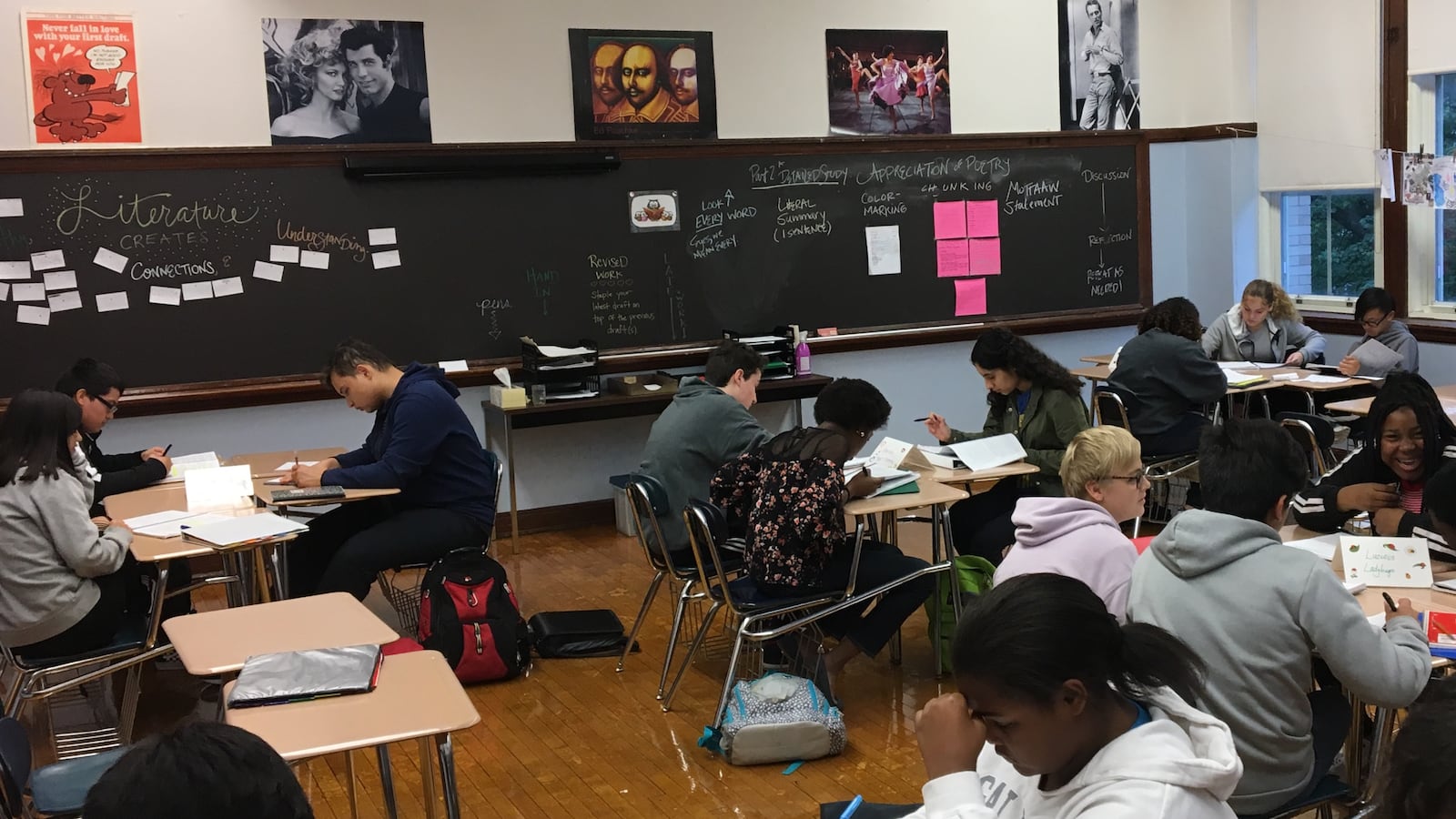Chicago schools posted several years of gains on the district’s own tests before scores flattened out more recently. Now, an exam that is considered the most reliable measure of student performance nationally shows a similar trend line.
Chicago fourth- and eighth-graders’ reading and math scores on the test, formally known as the National Assessment of Educational Progress, or NAEP, were flat from 2017 to 2019, according to results released Wednesday by the federal government.
The results suggest that the significant gains Chicago students made in previous years were not a fluke — but also that the city has not figured out how to extend them.
In eighth-grade reading, scores showed a small but significant decline. That’s also the grade and subject area where scores have barely budged in the 15 years that individual cities have gotten NAEP scores.
The test, also known as “the nation’s report card,” is administered by the federal government to a nationally representative sample of students in every state and many major cities. Because it is not given to all students and carries no consequences for the students who do take it, its results are considered a reliable marker for how America’s students are doing and how that has changed over time.
The new results put Chicago students on par with their counterparts in other big cities — but far behind where they should be. Less than a third of Chicago students scored “proficient” or better in any of the tested grades and subjects.
The new scores also add to mounting evidence that Chicago’s gaps in performance across students of different races are not closing. In fact, while students of all races saw their scores rise over the last 15 years, white students in Chicago have improved fastest — meaning that achievement gaps are actually widening.
Since 2003, Chicago has had the fastest-growing reading test score gap between white and Hispanic students. During that time, many other districts narrowed their gaps.
The new scores match those of a different exam that Chicago administers to students annually. On that test, the NWEA/MAP exam, scores increased between 2015 and 2017 and have been flat since.
There, too, score gaps between students of different racial groups remain wide. Chicago Public Schools CEO Janice Jackson said this year that she was particularly concerned about the performance of black and Latino boys.
Last year, the school district for the first time named a chief equity officer who is charged with tackling long-standing disparities in the school system.
Here’s how Chicago ranked among urban districts on the four tests:

